The mysterious ghost crabs
As night falls over Tetiaroa, the beaches come alive with mysterious movement. Pale, fleeting silhouettes emerge from the sand, scuttling at full speed before vanishing into their burrows.
They are not spectres, but the ʻŌhiti, the ghost crabs of Tetiaroa, among the island’s fastest and most elusive inhabitants.
Two species share the atoll’s sandy shores:
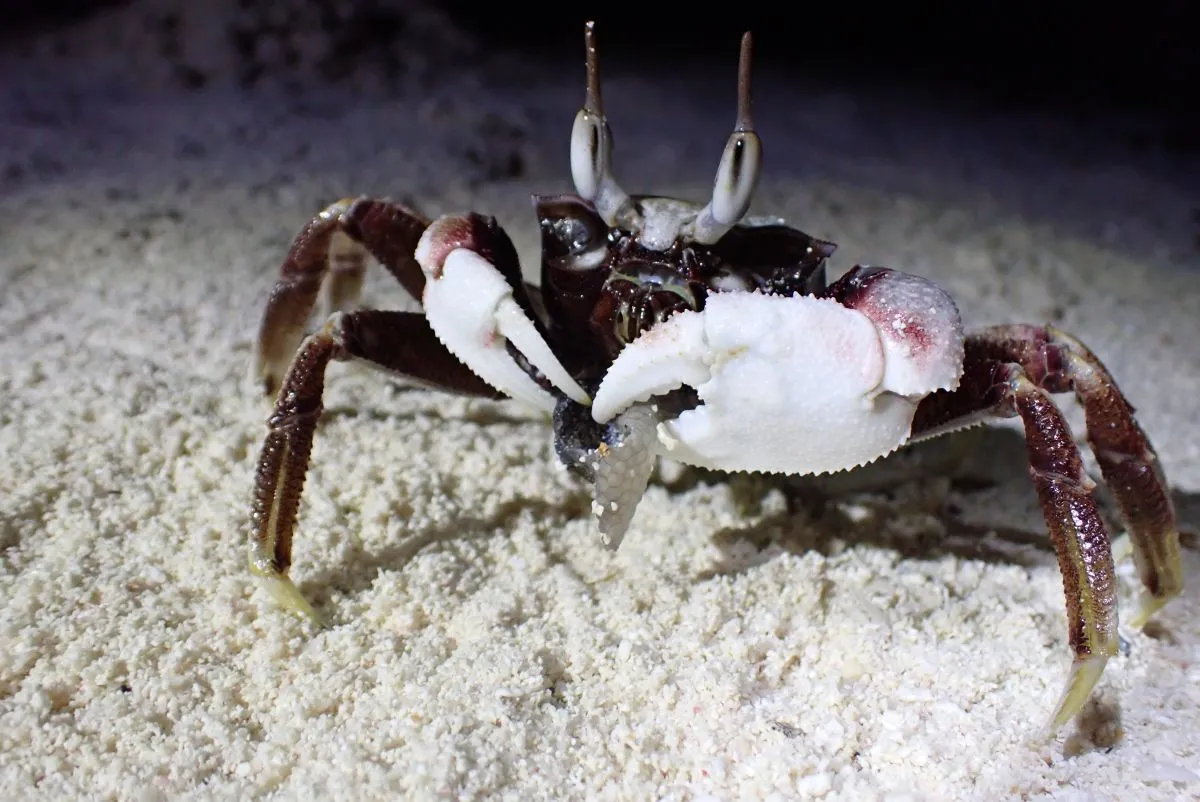

Invisible by day, swift and elusive by night, the ʻŌhiti lives up to its name. Its spectral appearance, impressive speed, and perfect camouflage make it the benevolent ghost of Tetiaroa’s beaches.
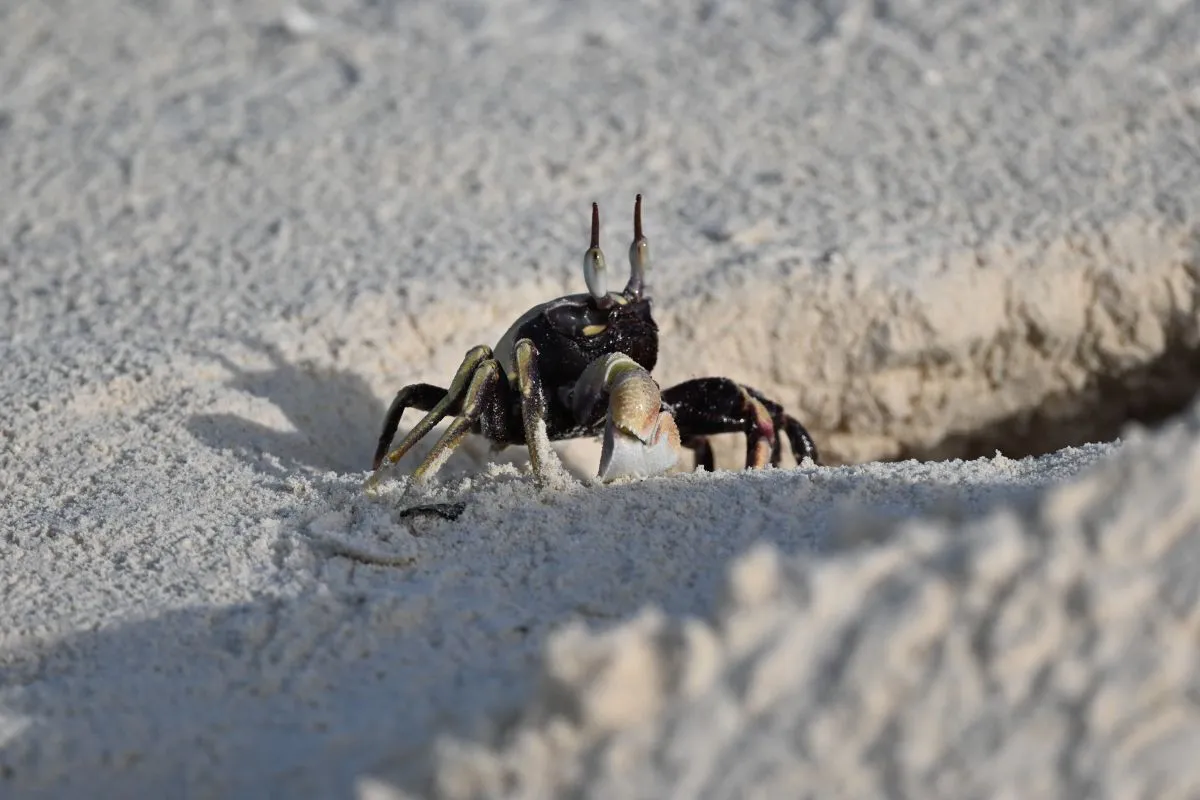
Built for speed and stealth
Part of the Ocypodidae family, ghost crabs have a slightly domed, square-shaped carapace, finely textured and often marked with shallow grooves forming an “H” on the upper surface.
In the horned ghost crab, its eyes, carried by long stalks and topped with small “horns,” are only found on adult males, allowing them to see 360° and detect the slightest movement around them. Females sometimes have growths on their eyes, but never long horns like males.
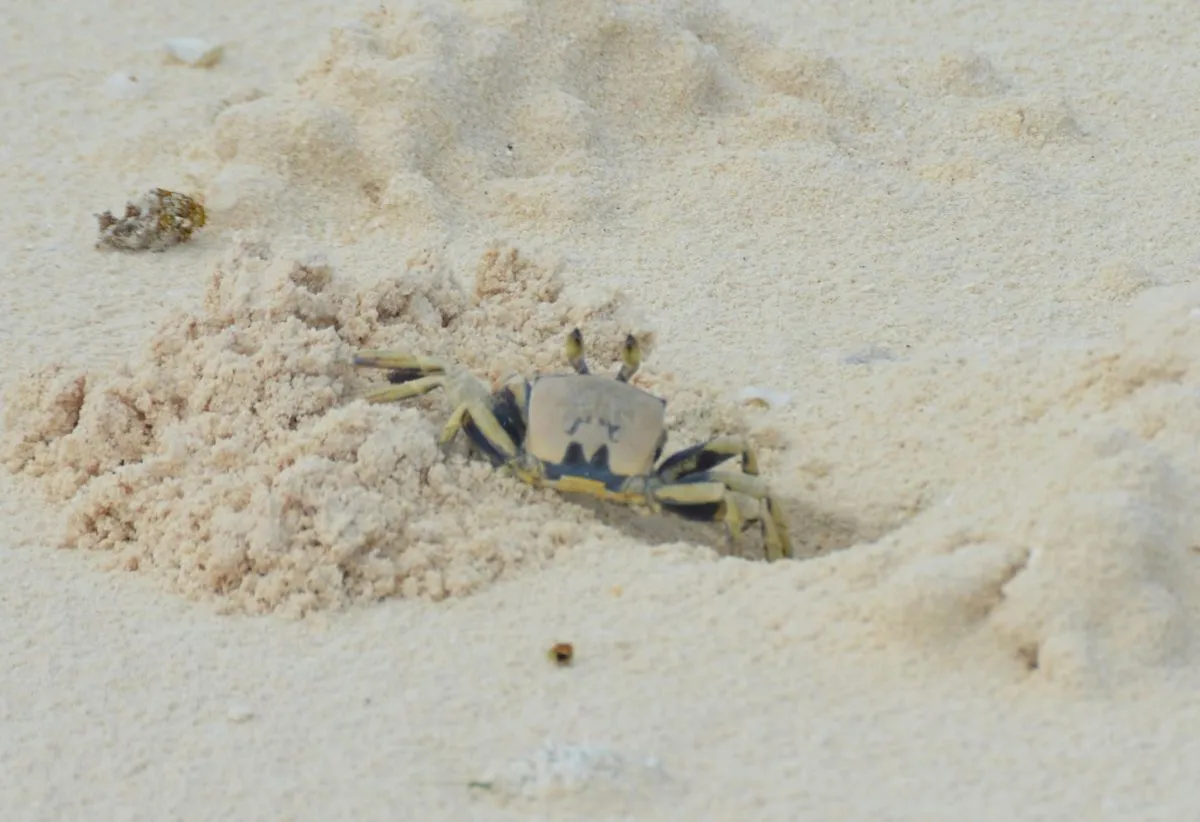
Its sandy coloration, from pale beige to deep chocolate brown, sometimes tinged with green or violet hues, provides flawless camouflage on coral beaches. With four pairs of slender, pointed legs, the ʻŌhiti can sprint up to 2.1 meters per second, instantly changing direction to vanish back into the sand.
Male and female ghost crabs can also be told apart by the shape of their abdomen: males have a narrow, pointed abdominal flap, while females have a broader, rounded one. Females carry their eggs beneath this flap until they are ready to hatch.
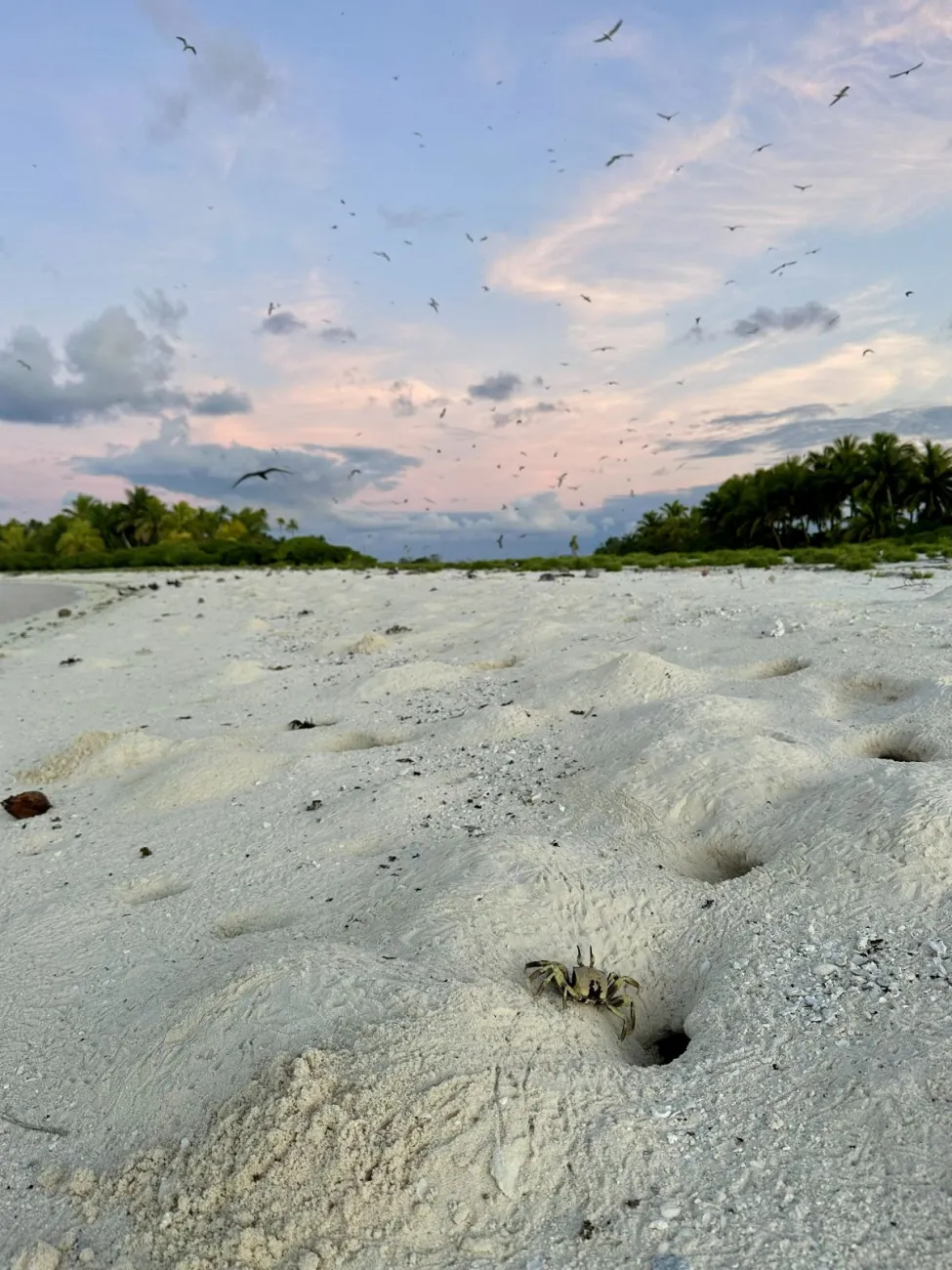
The sand architects
These intricate tunnels, sometimes over a meter deep, offer cool shelter during the heat of the day.
At dusk, the crabs emerge to forage, explore, and defend their territories.
They can often be seen shaping and tossing tiny balls of sand around their burrow entrances, before darting away at the slightest vibration or approaching step. This extreme vigilance makes them difficult to observe, and much of their behavior still remains a mystery.
When the eggs are ready, females journey to the ocean’s edge under cover of night and shake their bodies to release the larvae into the waves. These tiny larvae drift in the open ocean for two to three months before returning to shore as young crabs, ready to begin life on land.
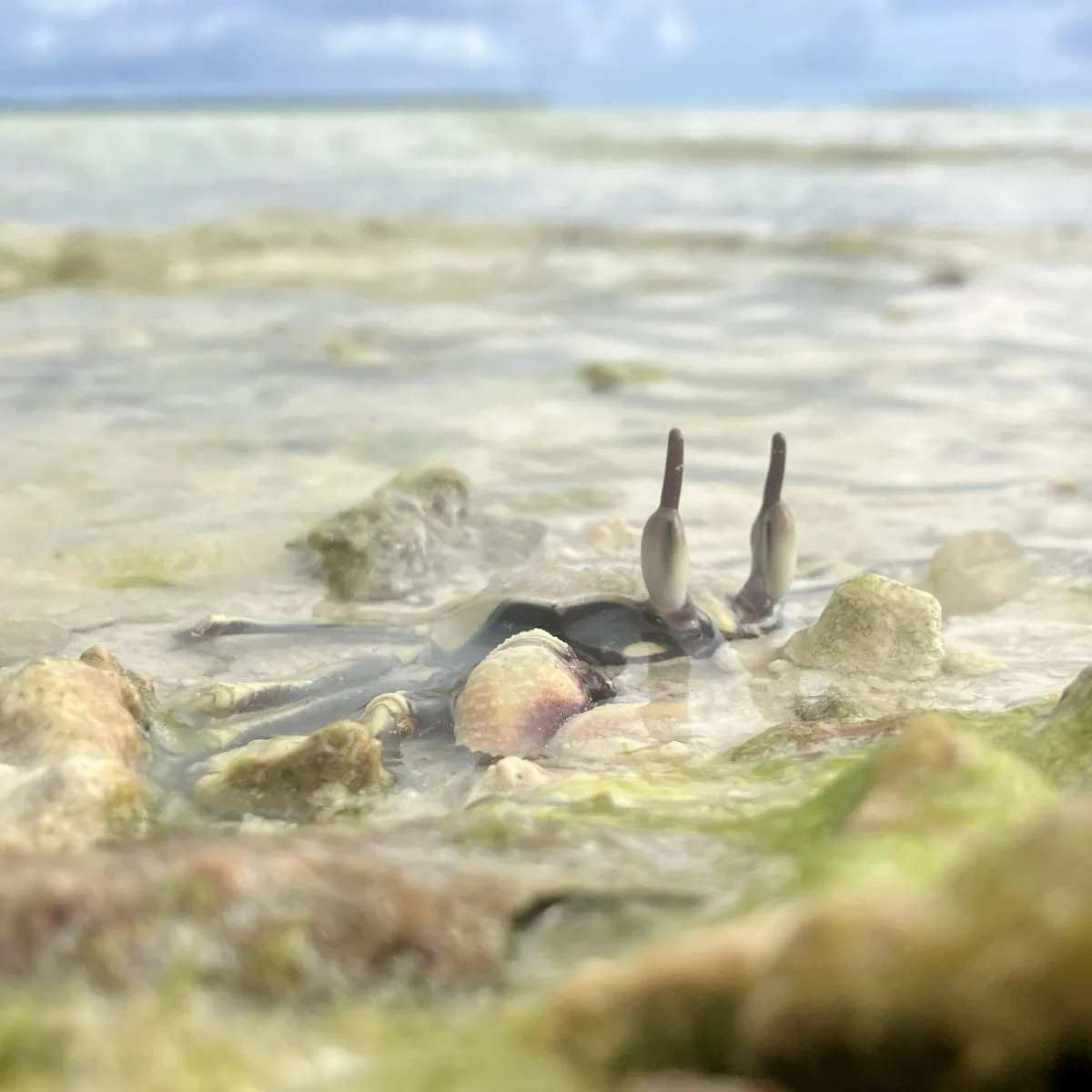
A ghost that needs water to breathe
Though they live on land, ghost crabs still depend on the sea: their gills must remain moist to function. They regularly return to the shoreline to re-wet their gills, especially during high tide or at night.
However, ghost crabs don’t always need to visit the ocean to stay hydrated, they can absorb water directly from wet sand using fine hairs (setae) located on the underside of their bodies. These specialized hairs can be seen in close-up photos where the crab is held upside down.
The crab that sings
On the inside of its larger claw, fine ridges allow the ghost crab to produce a rasping sound by rubbing it, a behavior known as stridulation. This sharp, squeaky noise is used to communicate, warn rivals, or defend its burrow. It’s the crab’s own way of saying it’s not just a silent ghost…
If you have had your sound on, you have been listening to the 'singing crab' while reading this.
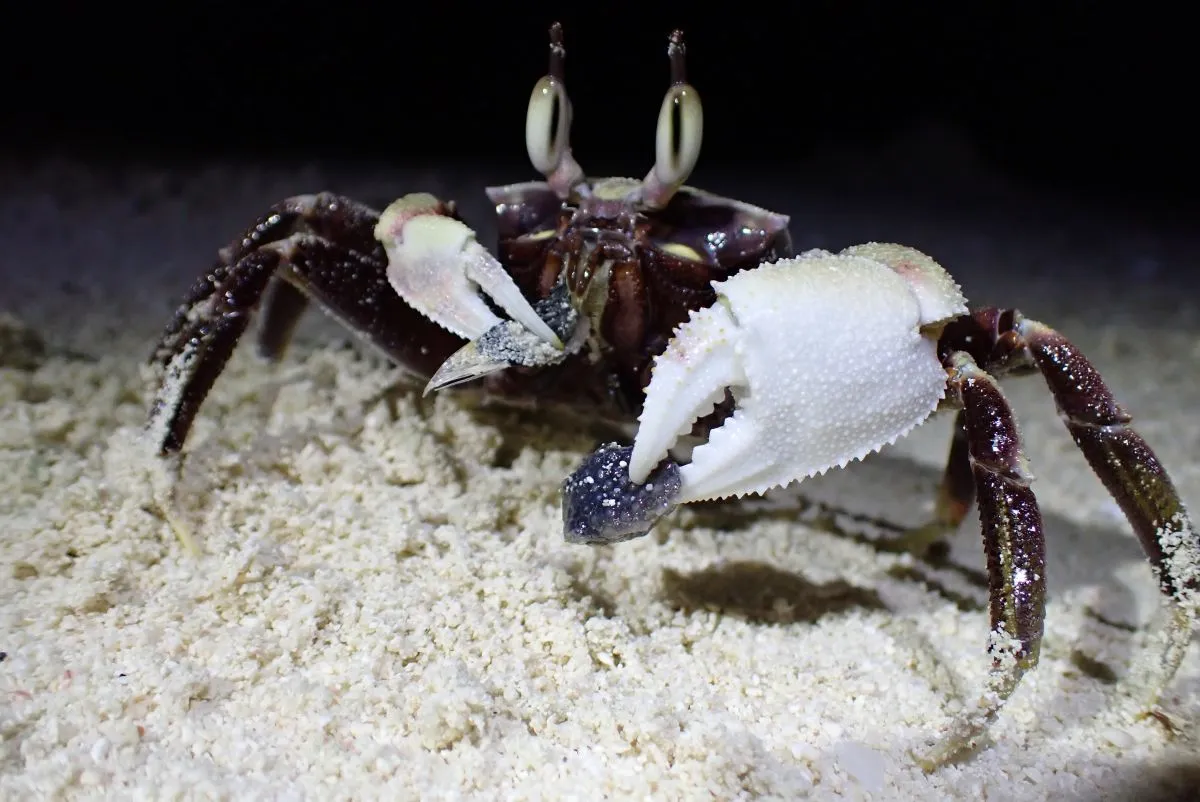
Nature’s beach cleaner
Omnivorous and nocturnal, the ʻŌhiti feeds on organic debris, plants, and small carrion, playing a key role in naturally cleaning and aerating the beaches.
By recycling organic matter, it contributes to the ecological balance of the coastline. Highly sensitive to human disturbance, ghost crabs thrive only on quiet, unspoiled beaches, making them excellent bioindicators — their presence is a sign of Tetiaroa’s exceptional environmental health.
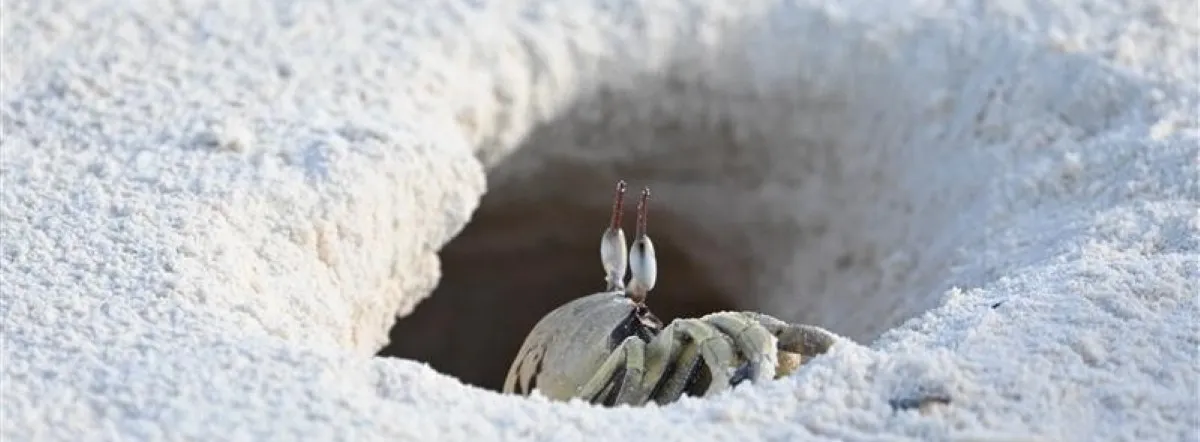
Under the moonlight, the ghost crab dances between the waves and the sand, reminding us that even the smallest inhabitants of Tetiaroa play a vital part in this fragile ecosystem.
On Tetiaroa, ghosts don’t haunt the beaches, they protect them.
Photos and information: © Simon Ducatez & Jayna DeVore, UMR SECOPOL


